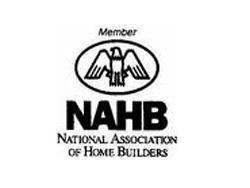Housing Market Chalked Up Modest Growth in Q3
Washington, DC, November 10, 2017-Markets in 197 of the 337 metro areas nationwide returned to or exceeded their last normal levels of economic and housing activity in the third quarter of 2017, according to the National Association of Home Builders/First American Leading Markets Index (LMI).
This represents a year-over-year net gain of 40 markets.
The index’s nationwide score inched up to 1.03, meaning that based on current permit, price and employment data, the nationwide average is running at 103% of normal economic and housing activity. Meanwhile, 84% of markets have shown an improvement year over year.
However, individual components of the LMI are at different stages of recovery. While employment has reached 99% of normal activity and home price levels are well above normal at 155%, single-family permits are running at just 56 percent of normal activity.
In encouraging news, employment levels are at or above normal levels in 118 markets-a 10% increase over last quarter. At the same time, permits are also expanding, as the number of markets at or above normal levels grew to 70-a 6% increase over the last quarter. The LMI data show that permits have recovered from losses earlier in the year, but remain the sluggish component of the index.
“This report indicates that housing is growing at a gradual pace in markets nationwide, even as many parts of the country continue to recover from the recent hurricanes,” said NAHB chairman Granger MacDonald, a homebuilder and developer from Kerrville, Texas. “Continued job growth and increasing household formation should help the housing market make additional gains as we begin to close out 2017.”
“Home price appreciation remains the strongest component of the HMI, and strong employment numbers also bode well for the continued growth of the housing sector,” said NAHB chief economist Robert Dietz. “While permits continue to inch upward, they remain the weakest element of the index and show that builders need to manage supply-side hurdles, such as rising material prices and labor shortages.”
“The number of metro areas on this quarter’s LMI at or above 90% has hit 271-over 80% of all markets,” said Kurt Pfotenhauer, vice chairman of First American Title Insurance Company, which co-sponsors the LMI report. “This indicates that the overall housing market continues to move toward a full recovery.”
Baton Rouge, Louisiana, continues to top the list of major metros on the LMI, with a score of 1.74-or 74% better than its historical normal market level. Other major metros leading the group include Oxnard, California; Austin, Texas; Honolulu, Hawaii; and Provo, Utah. Rounding out the top 10 are San Jose, California; Nashville, Tennessee; Spokane, Washington; Los Angeles, California; and Salt Lake City, Utah.
Among smaller metros, Odessa, Texas, has an LMI score of 2.25, meaning that it is now at more than double its market strength prior to the recession. Also at the top of that list are Midland, Texas; Walla, Walla, Washington; Florence, Alabama; and Kingston, New York.
The LMI examines metro areas to identify those that are now approaching and exceeding their previous normal levels of economic and housing activity. Approximately 340 metro areas are scored by taking their average permit, price and employment levels for the past 12 months and dividing each by their annual average over the last period of normal growth.
